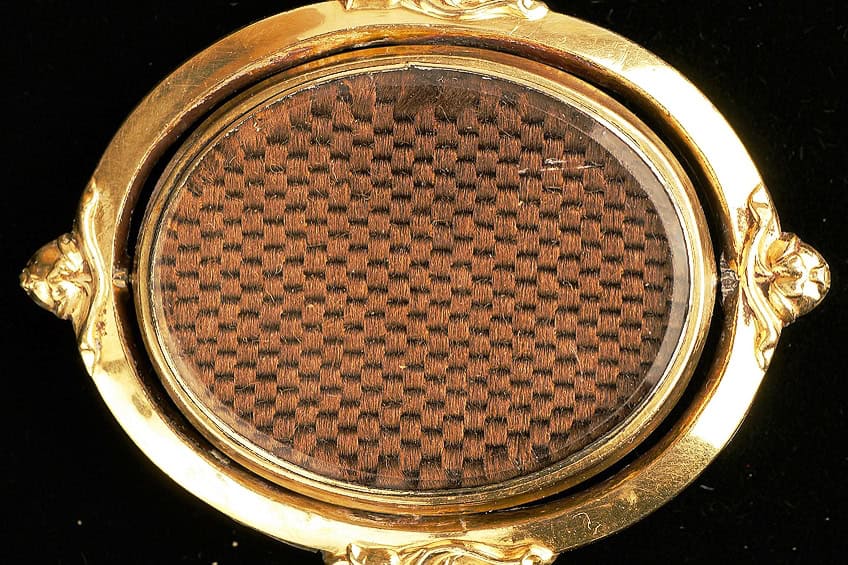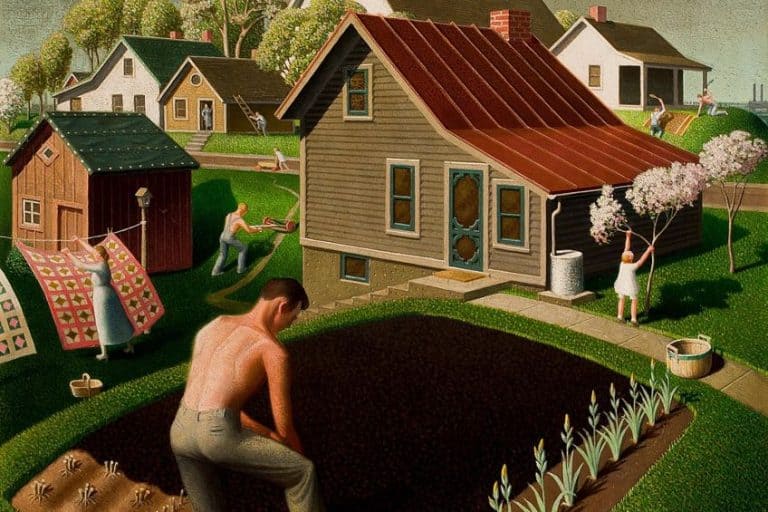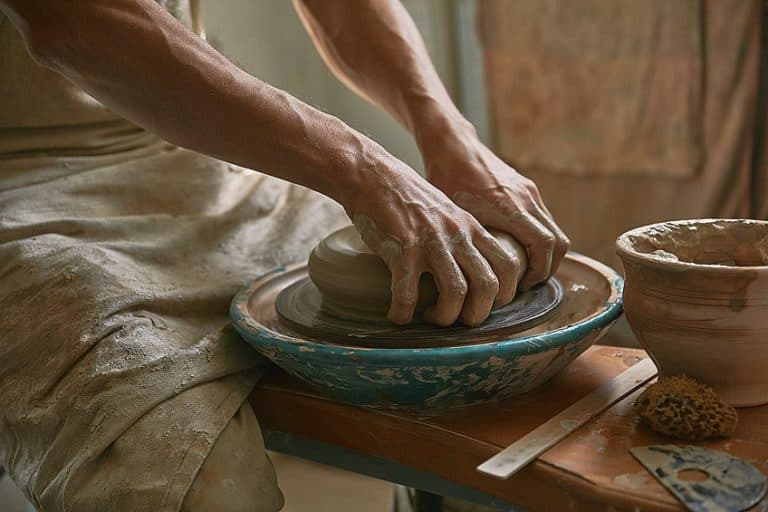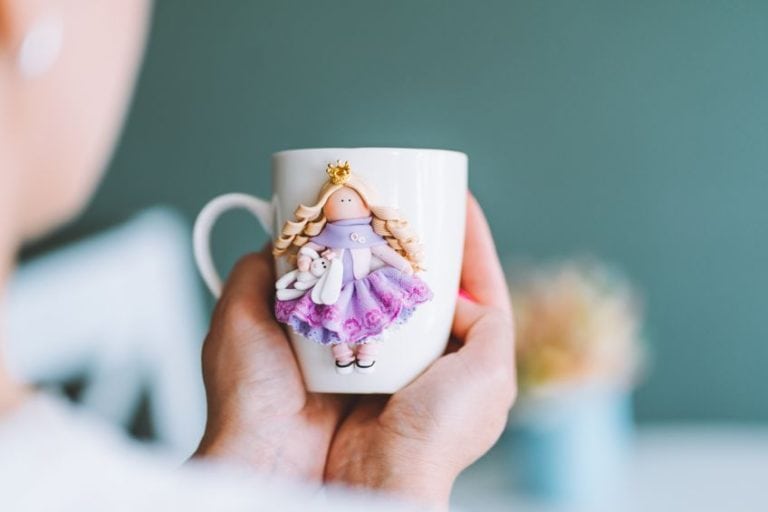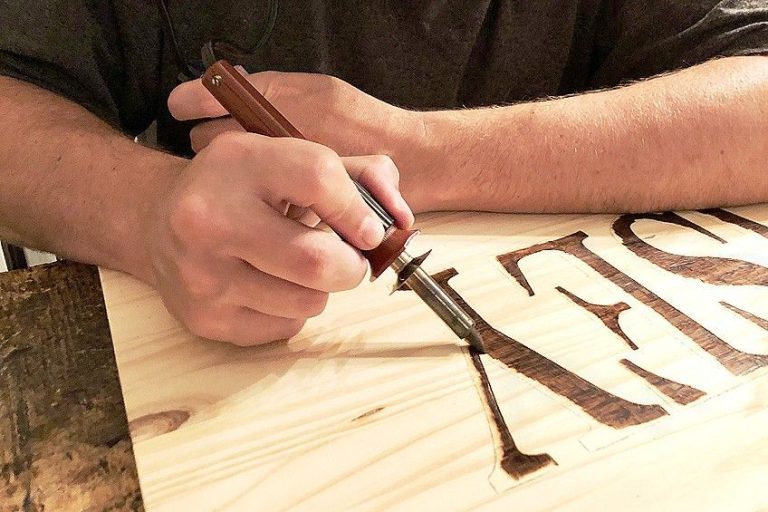Victorian Hair Art – Locks of Love
Victorian hair art is a fascinating and intricate form of artistic expression that emerged during the Victorian era. This unique art form involves creating intricate designs and objects using human hair as the primary medium. From delicate jewelry pieces to elaborate mourning wreaths, Victorian hair art reflects the sentimentality, cultural values, and mourning practices of the 19th century. Exploring the techniques, symbolism, and historical context of this art offers a glimpse into the complex emotions and societal norms of the Victorian era.
Key Takeaways
- Victorian hair art was a craft that transformed human hair into meaningful keepsakes, reflecting the period’s preoccupation with death and mourning.
- The art form showcased remarkable craftsmanship, utilizing sophisticated techniques to create jewelry and decorative items.
- Hair art provides insight into Victorian culture, highlighting the era’s sentimental values and response to mortality.
What Is Victorian Hair Art?
In the Victorian era, a unique form of expression emerged through the creation of art from human hair. This craft, known as hair art, was particularly emblematic of the period’s complex relationship with death and mourning. With high mortality rates and a culture steeped in sentimentalism, Victorians found solace and meaning in wearing and displaying objects made from the hair of deceased loved ones. The practice of weaving hair into various objects, such as jewelry and wreaths, served as a tangible memorial, preserving a physical connection to those who had passed.

Hair art during the Victorian period was not solely a morbid fascination but also a demonstration of skill and creativity. Various techniques were employed to manipulate hair into intricate designs, with elaborate pieces often taking the form of brooches, necklaces, and even framed pieces meant for display. These artifacts now offer us a window into the era’s social norms, touching on themes of love, loss, and remembrance.
Queen Victoria herself, known for her extended period of mourning after the death of Prince Albert, may have contributed to the widespread acceptance of hair art as a form of commemoration.
The process of creating hair art was meticulous. Artists carefully treated and sorted hair by color and length before crafting it into designs. Hair was looped, braided, and twisted; sometimes it was even ground into pigment for various uses. Hair retains its color and form for an extended period, which made it an ideal medium for creating keepsakes meant to last for generations. The unique qualities of hair enabled these pieces to withstand the test of time, providing a physical and enduring connection to those who had passed. Although its popularity has waned since the Victorian era, hair art remains an intriguing glimpse into historical practices of remembrance and artisanship.
Historical Context and Significance
The Victorian Era observed intricate mourning customs, deeply influenced by Queen Victoria’s own practices after Prince Albert’s death, where hair art became a significant form of sentimental expression.
Victorian Era and Mourning Customs
During the Victorian Era, mourning was a highly ritualized process reflecting society’s preoccupation with death and the afterlife. High mortality rates meant that death was a constant presence, and the elaborate mourning scene offered a way to honor the dead. Mourning jewelry became a key part of this process, often incorporating hair from the deceased, which was seen as a lasting and personal memento.

Influence of Queen Victoria and Prince Albert
The death of Prince Albert in 1861 profoundly affected Queen Victoria, who entered an extended period of mourning that lasted for the rest of her life. Her public display of grief and use of mourning jewelry, which included Prince Albert’s hair, set a precedent for the entire Victorian society.
This royal influence validated and amplified the mourning customs of the time, particularly in the creation and wearing of hair art.
Sentimental Value of Hair Art
Hair, being a durable and intimate part of a person, held great sentimental value in the Victorian Era. Hair art served as a tangible connection between the living and the deceased, often crafted into brooches, lockets, and bracelets as mourning pieces. It symbolized the desire to keep a physical part of the loved one close, and these items were cherished as precious keepsakes long after the mourning period ended.

Techniques and Materials
Victorian hair art utilized intricate techniques and materials to create memorable pieces. The craftspeople were adept in transforming hair, a delicate medium, into enduring tokens of affection.
Crafting Hair Jewelry
The creation of hair jewelry such as bracelets, brooches, and necklaces relied on the meticulous plaiting and weaving of human hair. Artists would often incorporate lace patterns and embellishments like pearls to enhance the visual appeal of the jewelry. The resulting pieces served both as fashion statements and personal mementos, capturing the essence of the Victorian era’s fascination with sentimental art.

Preservation and Pigmentation
For hair work to maintain its condition, preservation was critical. Hair strands would be treated with various pigments to retain their color over time or to achieve a desired hue. These pigments had to be carefully selected to ensure they did not damage the hair’s integrity while allowing for a range of artistic expression within the visual culture of the period.
Pattern and Design Innovation
Victorian artists challenged themselves with ever-more elaborate patterns and design elements. They would innovate new methods to braid and loop hair into complex shapes, often taking inspiration from traditional lace work. Instructional guides proliferated, enabling more people to partake in this craft and continually evolve the designs and applications of hair art.

Cultural and Artistic Impact
Victorian hair art, steeped in sentiment and mourning practices, had far-reaching cultural and artistic implications during the 19th century, and continues to resonate in contemporary contexts, speaking volumes about the era’s social customs and aesthetics.
Hair Art in Literature and Fine Arts
Victorian literature and fine arts frequently depicted hair art, illustrating its prevalence and significance in culture. In the literary realm, hair art found mention in the works of authors like Wilkie Collins and Emily Brontë, with the latter’s masterpiece, Wuthering Heights, including references to hair as a powerful symbol of enduring love and connection. Fine arts, reflecting Romanticism, often incorporated themes of beauty and loss, aligning with the Victorian fascination with death culture, which embraced hair art as a poignant memento. Notable literature featuring hair art include:
- Wuthering Heights by Emily Brontë
- Works by Wilkie Collins
- Great Expectations by Charles Dickens (Hinted through keepsakes and mementos)
Women in Victorian Britain and Europe played a central role as both creators and patrons of hair art, which served as a testament to their intricate handiwork and delicate aesthetic sensibilities. Indeed, feminist artists have since identified the traditionally women-centric craft of hair art as an intersection of personal narrative and artwork.
Representation of Hair Art in Museums and Collections
Hair art has transitioned from personal keepsakes to valued historical artifacts. Entities like the Mütter Museum in Philadelphia and the Morbid Anatomy Museum in New York have celebrated this unique form of art through exhibitions such as Woven Strands: The Art of Human Hair Work. These exhibitions, often curated with the expertise of specialists such as Emily Snedden Yates, special projects manager, offer a glimpse into the Victorian psyche surrounding love, loss, and remembrance.
Many of these exhibits provide educational opportunities through workshops, allowing a modern audience to connect with historical sentimentality.
Publications, like the instructional book by Mark Campbell, guided artists through the process, attesting to its popularity and cultural valuation. These works, exhibitions, and collections reveal a nuanced perspective on a seemingly morbid practice, illustrating Victorian culture’s embrace of hair art as a symbol of love and continuity amid the inevitability of death.
Victorian Hair Art Today
Today, the concept of Victorian hair art continues to captivate and intrigue both art enthusiasts and historians alike. While the practice of creating intricate designs from human hair has evolved over time, with contemporary artists exploring new techniques and themes, the essence of Victorian hair art still resonates in modern interpretations.

This art form serves as a bridge between past and present, inviting us to reflect on the enduring significance of hair as a medium for storytelling, memory, and emotional expression. Whether through traditional techniques or innovative approaches, Victorian hair art today remains a testament to the timeless allure of artistry intertwined with human history.
Victorian hair art stands as a testament to the creativity, craftsmanship, and emotional depth of the Victorian era. Through the delicate weaving of human hair into intricate designs and meaningful objects, this art form not only showcases the technical skill of its creators but also provides insight into the sentimental values and cultural practices of the time. As we marvel at these intricate creations today, we are reminded of the enduring fascination with hair as a medium for artistic expression and commemoration, preserving a unique aspect of Victorian art and culture for generations to come.
Frequently Asked Questions
How Were Victorian Hair Art Pieces Created and What Techniques Did They Use?
Victorian hair art was often created by weaving or braiding hair into intricate patterns. The techniques used included looping, twisting, and even grinding hair for use in pigments. These methods allowed for the creation of jewelry, wreaths, and various ornaments intended to last for generations.
What Is the Significance Behind Keeping Locks of Hair in the Victorian Era?
In the Victorian era, locks of hair were kept as mementos of loved ones, either living or deceased. Hair was considered a token of personal remembrance that held the essence of an individual, serving as a lasting and intimate keepsake.
What Is the Historical Context of Hair Wreaths During the Victorian Times?
Hair wreaths in the Victorian era were part of a broader tradition of mourning culture. They commemorated the dead and were often displayed in homes as a symbol of respect and remembrance. The practice highlighted the Victorian fascination with death and the afterlife.
What Are Some Characteristic Styles and Patterns of Victorian Hair Art?
Characteristic styles of Victorian hair art include intricate braids and coils fashioned into floral patterns, as well as elaborate geometric designs. These were commonly used in creating jewelry pieces like brooches, necklaces, and bracelets, highlighting the craftsmanship of the period.
Where Can One Find Authentic Victorian Hair Art for Purchase?
Authentic Victorian hair art can often be found in antique shops, estate sales, and auctions. They are also sometimes held in museum collections and may be available through specialty dealers who focus on mourning artifacts and historical objects.
Isabella studied at the University of Cape Town in South Africa and graduated with a Bachelor of Arts majoring in English Literature & Language and Psychology. Throughout her undergraduate years, she took Art History as an additional subject and absolutely loved it. Building on from her art history knowledge that began in high school, art has always been a particular area of fascination for her. From learning about artworks previously unknown to her, or sharpening her existing understanding of specific works, the ability to continue learning within this interesting sphere excites her greatly.
Her focal points of interest in art history encompass profiling specific artists and art movements, as it is these areas where she is able to really dig deep into the rich narrative of the art world. Additionally, she particularly enjoys exploring the different artistic styles of the 20th century, as well as the important impact that female artists have had on the development of art history.
Learn more about Isabella Meyer and the Art in Context Team.
Cite this Article
Isabella, Meyer, “Victorian Hair Art – Locks of Love.” Art in Context. April 23, 2024. URL: https://artincontext.org/victorian-hair-art/
Meyer, I. (2024, 23 April). Victorian Hair Art – Locks of Love. Art in Context. https://artincontext.org/victorian-hair-art/
Meyer, Isabella. “Victorian Hair Art – Locks of Love.” Art in Context, April 23, 2024. https://artincontext.org/victorian-hair-art/.


